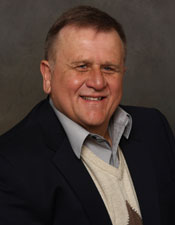Written by Gary Grove and Bernardita Sallato. This article is a summary of a presentation made to the Columbia Basin Tree Fruit Club on April 26, 2023.
Pacific Northwest (PNW) cherry growers have for the last several years been grappling with diseases caused by viruses, bacteria, and phytoplasma (Littie Cherry, Bacterial Canker, and Western X, respectively), but we still have significant issues with some caused by fungi. PNW. Growers have long grappled with preharvest fungal diseases of cherry, most notably powdery mildew (caused by Podosphaera cerasi) and Cytospora canker (caused by Leucostoma cinctum). However, due to the recent and understandable focus on managing the Little Cherry and Western-X epidemics, these fungal diseases have temporarily faded on our radar screens but they remain problematic and perhaps a bit more complicated (particularly cankers) than we have long thought.
Cherry cankers and dieback
Cherries (Prunus avium L. ) in the Pacific Northwest (PNW) have long been affected by twig and branch dieback. Cytospora spp. (= Leucostoma) was shown to be the primary fungal cause of cherry dieback in the PNW during the late 20th century. The bacterial pathogen Pseudomonas syringae was also demonstrated to be a significant problem during the same period. These pathogens are two of several causing cankers and dieback on perennial woody crops. Eutypa lata has been documented as a major cherry wood pathogen in other production regions and (thanks to Garrett Bishop of GS Long Company) there is ample evidence of its association with cherry dieback in WA. Given our significantly expanded and more genetically / horticulturally diverse cherry industry in the PNW, coupled with a changing climate, dieback has become increasingly problematic in the region. There may also what could be locally undocumented genera and/or species of bacterial or fungal (e.g., Calosphaeria pulchella) pathogens involved individually or in pathogen complexes. An ongoing industry survey has revealed quite a diversity of canker types and dieback. At this point in time we have documented the presence of both bacterial and Leucostoma cankers/dieback but have collected specimens of cankers/dieback of unknown etiology but quite similar to cankers described on cherry in other regions (e.g. Eutypa).





The fungi that cause cherry cankers worldwide are closely related taxonomically but somewhat different epidemiologically. The latter character may require slightly different management approaches, so it is imperative that we understand the causes and complexities of the regional canker/dieback issues. Much of the epidemiological information on Eutypa and Calosphaeria cankers has been developed in regions with significantly more annual precipitation than occurs in the inland PNW so if we find either or both organisms to be significant in the region, local epidemiological and management studies will need to be conducted. Fortunately, we know far more about the epidemiology of Leucostoma canker in the region where irrigation plays a significant role in reproduction and dissemination of the L. cinctum. However, moisture is a critically component in the epidemiology of diseases caused by all three pathogens.
Powdery Mildew
We have been working on powdery mildew for nearly 40 years and the last few years have been the lightest years on record. For example, we were during last several years unable to find powdery mildew in our WSU-IAREC Roza research orchard until early August when during previous years we normally first encountered it in early- to mid-May. During the 2021 growing season we found this delayed occurrence quite common in other PNW orchards and attributed it to the spring drought and early summer extreme heat. However, we noticed the delays in both 2020 and 2022 under more “normal” spring weather conditions indicating that other factors might be involved. First, it has been several years since that last industry-wide powdery mildew “hammering” in the PNW and successive light industry-wide disease years normally translate to lower inoculum loads in subsequent growing seasons. Under those circumstances the disease does not normally disappear but its annual onset is often delayed. This means that symptoms and signs of the disease first appear later in the growing season, i.e. the scenario that we observed during the 2020-2022 growing seasons. However, if powdery mildew makes its initial appearance prior to fruit harvest the disease must still be managed. Management requires suckering, good orchard maintenance, and an effective fungicide program. There are multiple fungicide options available for disease management, but resistance has been documented to Group 3 and 11 fungicides in the PNW. Therefore, developing a biorational fungicide program is a site-specific process. Consult EB 0419, 2023 Crop Protection Guide for Tree Fruits in Washington, for current fungicide options and resistance management guidelines.
Contacts


